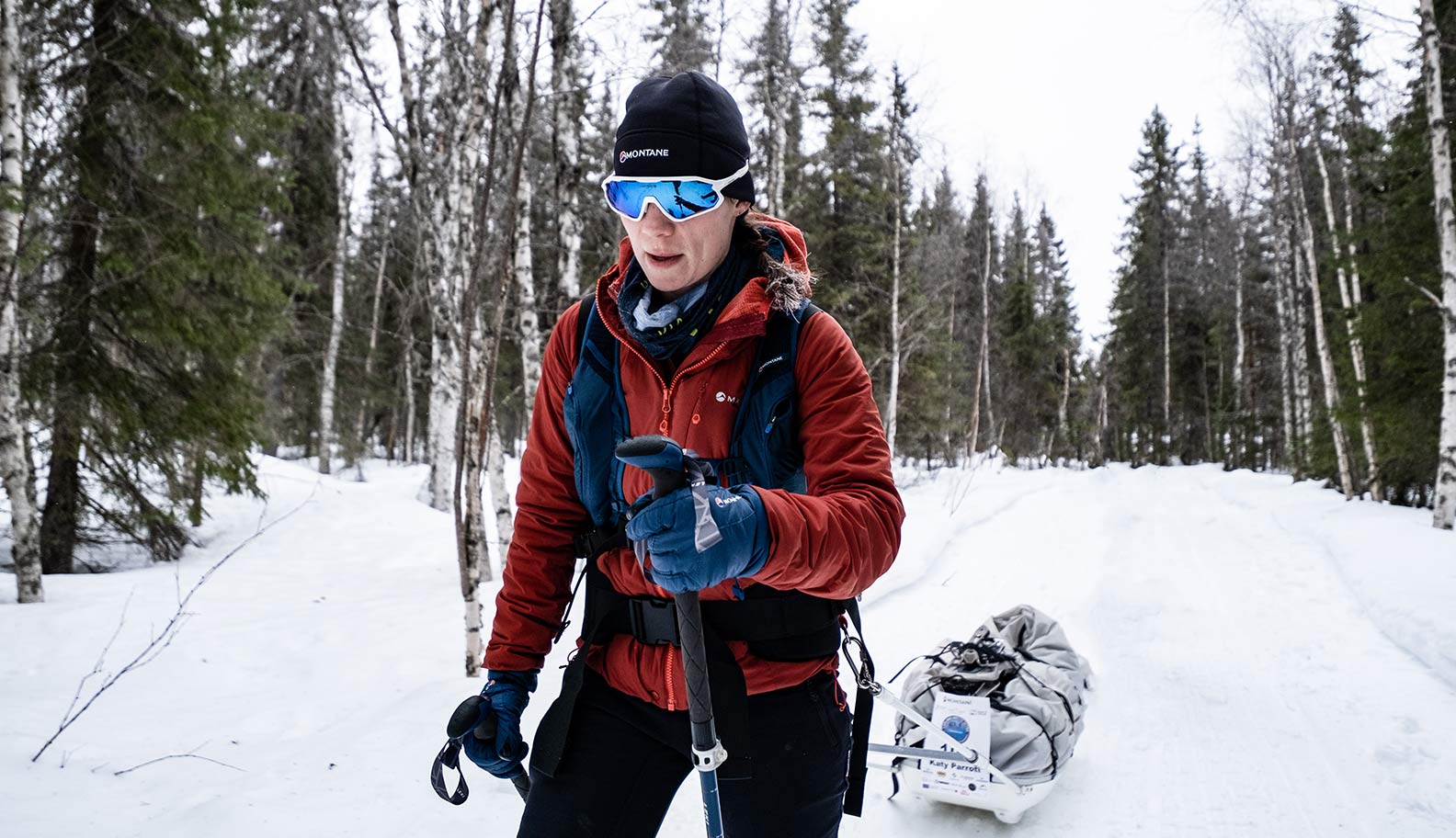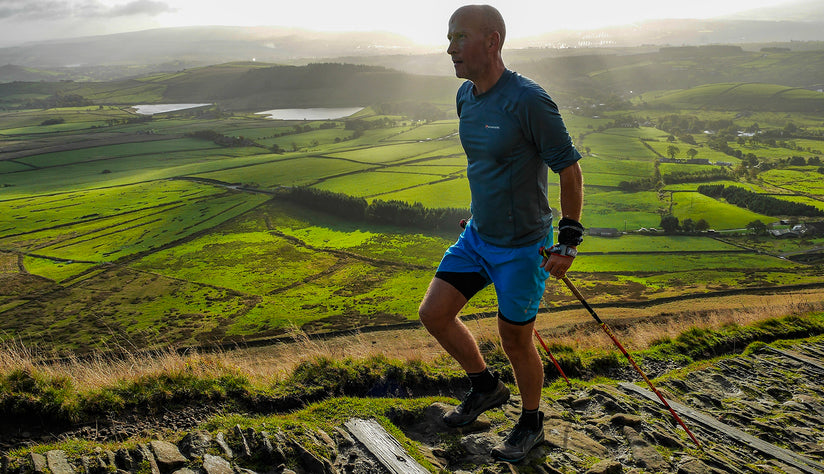To mark International Women’s Day (08 March) we’ve teamed up with #TeamMontane’s Renee McGregor to explore an often-overlooked topic that affects all women on the planet: the powerful female sex hormone: Oestrogen.
This hormone is also found in men, but found in much greater amounts in females. Oestrogen plays a significant role in our physical and mental development as we age. By understanding these changes and how this power hormone can affect women’s health, we can better optimise this essential hormone and in turn, your performance in the outdoors.
An Overview of Oestrogen
Do you remember the first time you were told about periods?
If it was anything like my experience, you would probably have been 11/12 years old, fairly new to secondary school and told about this awful monthly situation that was going to occur sometime shortly in the future, which was fundamentally an inconvenience, painful and messy!
And yet, here I am, 3 decades later, educating women on the importance and benefits of all things hormones, but especially the female sex hormone, Oestrogen.
Personally, I agree with Brian Cox who defined the human body as a series of chemical reactions. Not only that, I would add that the majority of these reactions also work on feedback loops to ensure that our internal physiological environment remains consistent. So, while humans tend to think of the body as a machine, in reality, it is an ecosystem that needs constant tending and attention.
Many of these chemical reactions involve hormones. Hormones are chemical messengers that are made by specialist cells within endocrine glands, and they are responsible for the correct function of the body.
When we think about hormones, for the majority of us, our thoughts turn to biology lessons where oestrogen and testosterone jump to mind. While these are indeed incredibly important for reproductive health and performance (more on this later), they are two of a very long list.
Others include insulin, growth hormone, leptin, cortisol, melatonin, and thyroid hormones, T4 and T3. All of these have critical roles to play within our body from maintaining metabolic function, to ensuring progression and adaptation from our training, optimising bone health, appetite control and regulating sleep.
Thus, regulating and maintaining our hormonal health is central to both our health and performance. Understanding how to harness the benefits of these amazing chemical messengers allows us to meet our potential.

Energy Availability
Modern society tends to encourage the message that we all need to, “move more and eat less”. However, physiological studies have determined that the human body is biologically biased towards energy balance. So, in reality, we need to “move more and eat more” if we are to see the performance benefits from our training.
While there is a real emphasis on energy in, versus energy out, this then ignores the importance of energy availability. Energy availability is described as “the amount of energy available for biological function once the cost of movement has been subtracted from overall energy intake.”
That is the energy left over to allow for all these chemical reactions to occur in our body, once the cost of movement, which includes training has been removed.
Thus, the above demonstrates how much we have simplified the role of nutrition in the human body. The key role is to ensure sufficient nutritional intake to allow the body to function and perform optimally in all aspects, not just training and exercise, but very few of us stop to think about the more intricate processes that need to occur in the body to allow this to happen.
So, if we do not eat sufficiently to meet both these demands, then the body turns on compensatory behaviours that results in the down regulation of metabolism and hormonal function, which has implications for our health and performance.
But how do these requirements and processes change as we move through our life span?

Adolescence
Adolescents have very high energy requirements as they are also going through growth, development, and puberty, all of which have a huge energy cost. One of the key concerns with this age group is not meeting their energy requirements and delaying puberty.
In females, if menstruation has not started by the age of 16 years, this is known as primary amenorrhoea and should not be ignored. Regardless of what you may hear, it is never ok for a female not to have a period.
Adolescence is the time when peak bone mass occurs but if there are disruptions to energy intake, growth, and the onset of menstruation, this can have severe consequences.
Oestrogen (and testosterone in males) is the key component for optimal bone health, in addition to sufficient energy, calcium, vitamin D and K.
In those females where primary amenorrhoea occurs, they are at high risk of lower bone density and thus developing stress fractures. In fact, it is a common observation amongst runners, especially females in their early 20s who have or had primary amenorrhoea. It seems to be the most likely time for them to develop their first stress fracture and for some, it is a long path of repeated injuries, inconsistent training and sadly in 46% of young runners, this results in career over before they make it to senior level.

The Menstruation Years
While there is a lot of negative press about menstruation and our monthly visitor, it is important to appreciate that having a period is actually a good sign and a real barometer of health. It’s basically saying that conditions are optimal for a pregnancy to occur. However, our period is more than just a reproductive portal. As we have already seen, delayed or no menstruation can have huge consequences on our bone health and significantly increase our risk of injury. Additionally, Oestrogen is really important for our cognitive function, our balance, pro-perception, heart health, immune health, and mood.
Any reduction in Oestrogen, and there is a huge risk to your overall health and performance, (Just ask any woman going through the perimenopause and menopause - more on this later!).
A normal menstrual cycle is defined as anything between 23-35 days. While textbooks generally discuss a 28 day cycle, very few women experience this. The key thing to be aware of is changes to YOUR cycle, such as the cycle length getting longer or shorter, the flow getting lighter or heavier and the number of days of your cycle changing or your cycle stopping (secondary Amenorrhea), unless of course you have fallen pregnant.
Any deviation from your normal should not be ignored. There are many potential threats to our menstrual cycle. These can be medical or due to lifestyle, but regardless of cause, all should be investigated.
Nutrition intake, or nutrition timing, especially in physically active women, as well as changes in body composition, training load and volume, can all interfere with your cycle. So tracking yours and being aware of change can help you to ensure that you are staying on top of your fuelling and training.
Contrary to what many women think, having a regular cycle also signifies that the rest of your hormones are most likely working in synergy. This includes growth hormone and testosterone which are essential for laying down lean muscle mass and ensuring progression from training.

An Ode To Carbohydrate
Recent studies by Danish researcher Anna Mellin have confirmed that carbohydrate availability plays a key role in hormonal regulation and menstrual health, particularly in women who are physically active.
The rise in trends encouraging fasted training and avoiding carbohydrate have left a lot of women with irregular cycles, or in worst case secondary amenorrhoea – the complete absence of cycles for 3 months or more. And remember, no periods, no Oestrogen which impacts bone health and leaves you more susceptible to injury and also illness.
Contrary to popular press, carbohydrates are not the enemy. In fact, I would go as far as saying they are essential for active women to stay healthy, but to also allow for progression in their training and sport.
As a rule of thumb, in sport we work on a basis of for a female who is exercising at a moderate intensity for 60-90 minutes a day, that is an effort of around 7/10, so not flat out, she will need a minimum of 5g of carbohydrate per Kg of Body weight, distribute evenly throughout the day.
One FINAL point to highlight here is that the combined oral contraceptive pill does not mean you are having a period. This is a withdrawal bleed. While every woman has the right to contraception, I will add that most hormonal contraception will disguise your natural cycle so you won’t necessarily know if your training and lifestyle are impacting it.

Perimenopause and Beyond
Perimenopause, or menopause transition, begins several years prior to menopause. It usually starts in a woman’s forties, but can start earlier in some cases and can last anything from a few months to ten years. Perimenopause stops at menopause, where the ovaries no longer produce any eggs and oestrogen levels are low.
As we have already indicated, women will start to see declining levels of oestrogen from around 40 years onwards. Oestrogen has several important functions relating to both body composition, physical performance, bone health and cognitive function as we have discussed previously. In addition, Oestrogen protects women from heart disease as it prevents the production of cholesterol. This is why the risk of heart disease increases in post-menopausal women.
It is very difficult to diagnose and identify if a woman is going through perimenopause. There are in the region of 200 potential symptoms which would indicate a woman might be going through perimenopause, but we only tend to hear about the most common, such as hot flushes, fatigue, brain fog and joint pain. Other less known symptoms include digestive changes, low mood, changes to sport performance, dry eyes, dry skin, restless legs and heightened anxiety.
While it does all sound a little doom and gloom, thankfully, with advances in research and more women asking for information, there are a number of options that can help alleviate a lot of these symptoms and improve quality of life at this stage. As most of these symptoms are related to declining hormone levels, essentially oestrogen, HRT(Hormone Replacement Therapy) is highly recommended. While there has been a lot of negative press about HRT in the past, there are numerous options available now, so it’s definitely a case of persevering until you find the option that works for you!
Research has also shown that being and staying physically active can support your progression through perimenopause, often reducing the severity of a number of the symptoms associated with it. In particular, including more resistance training over cardio, will not only help maintain lean muscle mass and thus body composition, but also prevents the natural decline in bone density often seen at this age.
From a dietary perspective, in general it has been found that following a Mediterranean-style diet best supports this phase of life. However, there should also be a focus on ensuring enough protein in the diet to further prevent the usual decline in muscle mass associated in this population. Those that consume good amounts of protein have been shown to maintain 40% more muscle mass than those that have low intake of protein.
During perimenopause, bone health becomes a real concern; declining oestrogen levels reduces protection. Ensuring sufficient Vitamin D, calcium, resistance training and using HRT can all help to prevent further loss.

Societal Misconceptions
Many women who are going through perimenopause often notice and struggle with changes to their body composition. Cue, current misconceptions and western societal beliefs and many women at this stage decide that the only way to combat this change is through restrictive diets and removing carbohydrate.
Indeed, latest research shows the complete opposite; declining oestrogen levels means that the female body is no longer efficient at fat oxidation which tends to spare our use of carbohydrate. Thus, carbohydrate intakes, especially in those women who remain physically active are critical not just for performance, but also for counteracting the fatigue, often associated during this phase of life.
Additionally, we know there is a direct link between carbohydrate availability and thyroid function. When carbohydrate intake is reduced too far in females, this can result in a down regulation of the thyroid gland, and thus metabolism, impacting body composition and energy levels further.
The Final Word
Hormones are essential for life – we need them to perform physically and cognitively, but how many of are actually aware of this?
Ensuring sufficient energy and nutrient timing is key to allow the network of hormones within the human body to work optimally. For women, appreciating and understanding the power of their reproductive hormones, particularly Oestrogen and the many benefits to our health and performance is empowering and definitely a conversation that needs to keep happening.
This article was written by #TeamMontane Sports and Clinical Dietician Renee McGregor. Looking for more advice from Renee? Don’t miss 6 ways to boost your winter immunity.

















